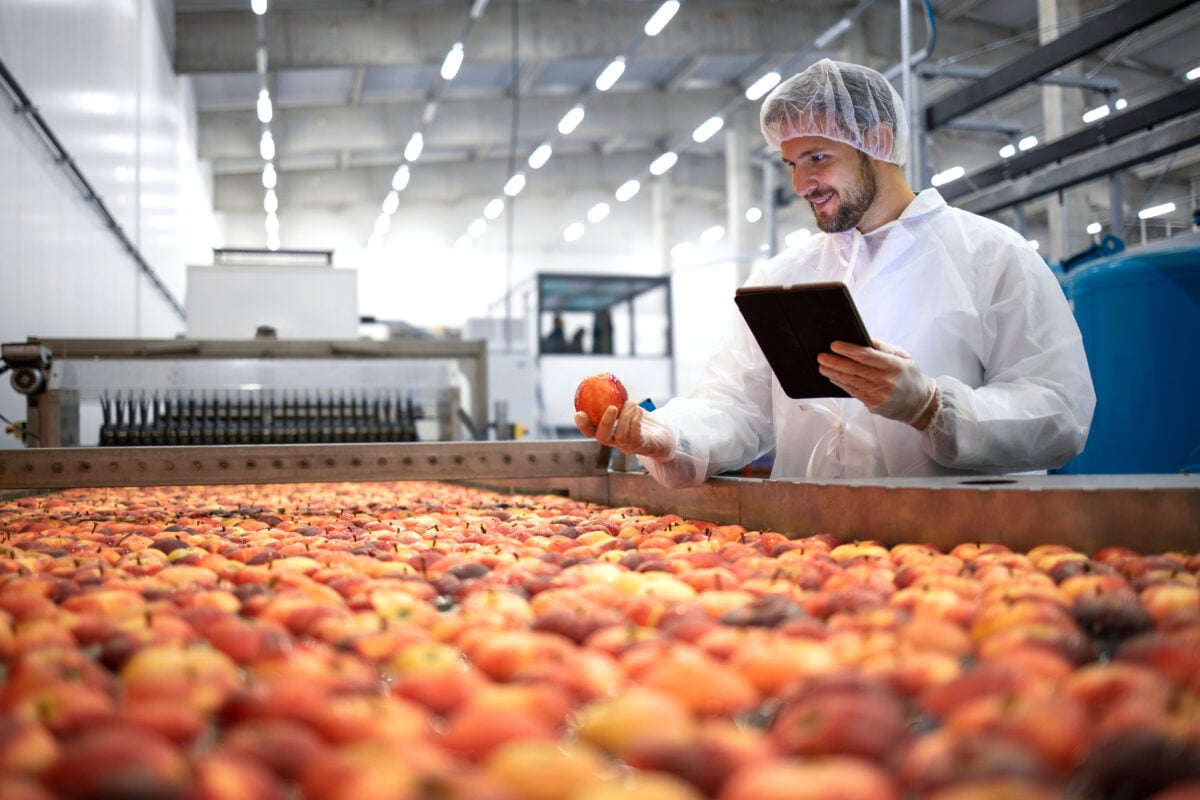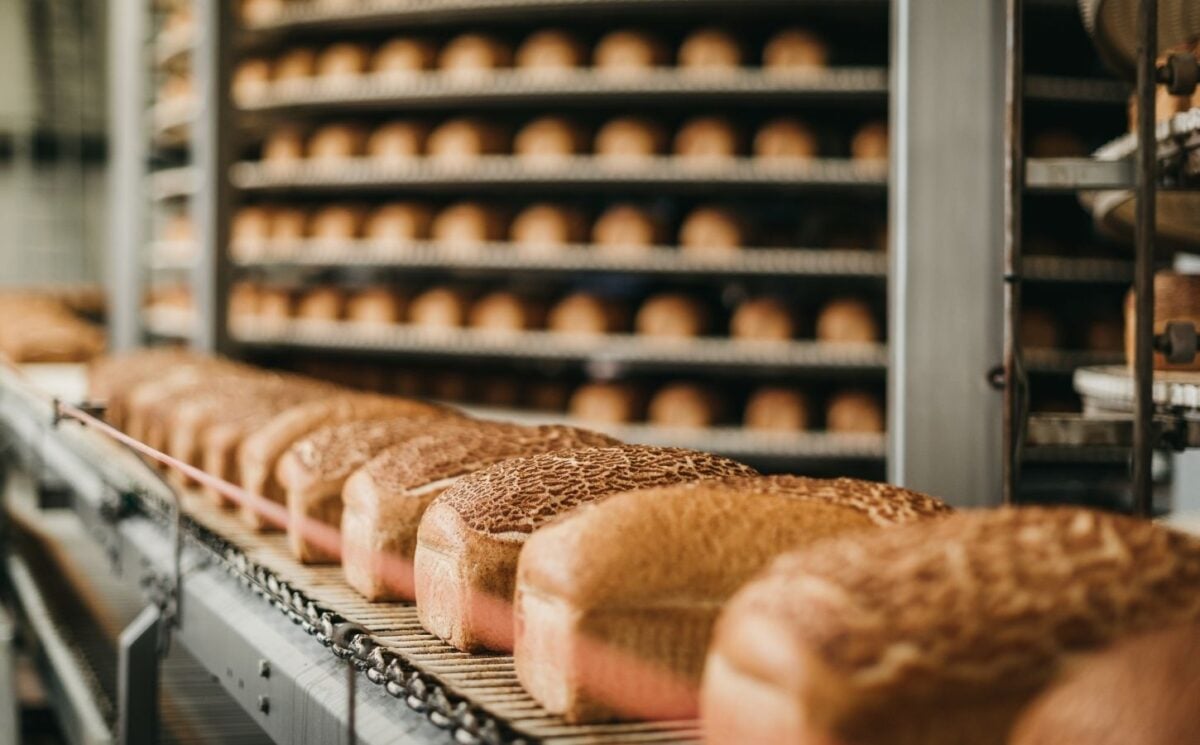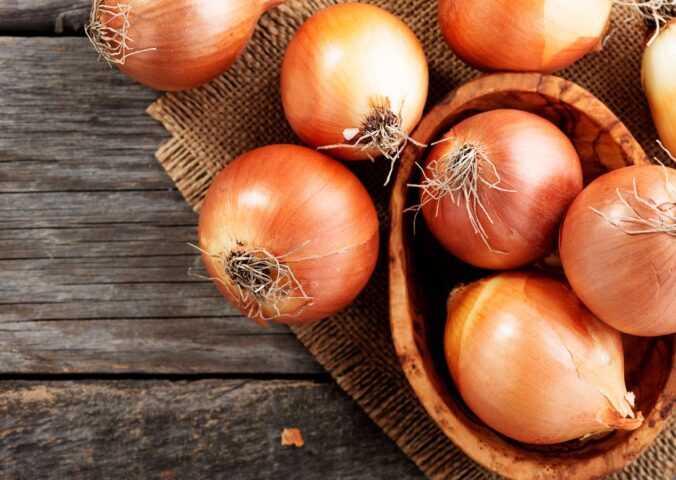The topic of processed ingredients is a controversial one, and the majority of European shoppers are worried about ultra-processed foods (UPFs). But the reality is complicated, in part because food processing is a surprisingly common practice.
Read more: The Technology That ‘Could Turn The World Vegan’
What is food processing?
When you think of food processing, it might be that you think of certain ultra-processed foods linked to negative health outcomes, like ham or sugary soft drinks. In reality, the majority of the foods we eat today are processed in one way or another.
The US Department of Agriculture (USDA) says any ingredient that has undergone changes to its natural state – such as cleaning, milling, pasteurizing, packaging, preservation, or flavoring – is a processed food. This means that breads, some grains, juices, and even fresh produce like apples are classed as processed foods.
It is arguable that a reductive definition of “processed food” (one that includes apples and cookies in the same category) does not support consumers in making informed decisions on food and nutrition. The public’s kneejerk mistrust of all processed or “unnatural” foods has also been repeatedly used to undermine plant-based meat and other alternatives.
Writing for Food Manufacture, food process engineering expert Dr Camila Perussello noted that “changing the narrative” around processed foods is essential moving forward. She also said that better consumer education is “vital for a just, sustainable, and resilient food system where people eat healthily and consume mindfully.”
Read more: Brand Creates Wheat-Based Binders For Vegan Meat That’s Free From E-Numbers
Why are foods processed?

Foods can be processed for a variety of different reasons. Some are processed to make them suitable for human consumption, like olives, while others are processed to make them safer, like fruit juices.
Some are processed for convenience, like canned or frozen vegetables, and certain foods for flavor and longevity, like pickles, or crisps and chips.
With the above in mind, processed foods can be placed on a wide spectrum with minimally-processed at one end (like apples) and ultra-processed at the other (like soda). But even at the extreme of “ultra-processed,” the topic remains complicated and amorphous.
Many processed foods have obvious benefits, like longevity and safety, but so-called “fun foods” have their place too. Pre-packaged cookies, for example, which typically have negligible nutritional value, can also be a part of an overall healthy and well-balanced diet.
Are processed foods unhealthy?
There is growing evidence of a link between regular or high consumption of ultra-processed foods and negative health outcomes like diabetes, cardiovascular disease, poor mental health, various cancers, and poor gut health.
As with processed foods, the definition of “ultra-processed” is unclear, and nutrient-dense foods like fortified cereals and whole grain bread can also be classified as UPFs, even though they are both generally linked with positive health outcomes rather than negative.
Many plant-based alternatives are also UPFs, but a growing number of studies show that these foods are both healthier and better for the planet than meat and dairy. (Plant Based News (PBN) has guides to ultra-processed foods and processed vegan foods here.)
Food systems researcher Jenny Chapman recently authored a report on the need to retire the phrase “ultra-processed foods” entirely. The term has become laden with misinformed but negative connotations and serves little practical purpose to consumers.
She previously told PBN: “The UPF categorization simply tells us that, like so much of the food we eat – tofu, hummus, oat milk, wholemeal bread – plant-based meats are made in factories. It is unable to tell you if a food is healthy or not.”
5 benefits to food processing

As noted above, processed food can be considered a spectrum including everything from nutrient-dense, fortified ingredients to fun foods like crisps and cookies. That means there are no catch-all rules for every food and ingredient included on the spectrum. These are just some of the proven and potential benefits of food processing.
1. Food safety
From early forms of food preservation like drying, pickling, and fermenting, to modern ones like pasteurization, sterilization, and irradiation, processing helps to maintain food safety.
Pasteurization, for example, retains nutritional value while killing off harmful bacteria, making it essential both for the safety of consumers and the maintenance of global health. While irradiation both removes microorganisms and helps to extend the lifespan of fresh produce.
2. Additional nutrition
Some common forms of processing can remove certain nutrients, and canning vegetables, for example, slightly reduces water-soluble vitamin content. But in many cases, this is offset by the potential for food processing to preserve the remaining nutrients for longer.
Preserving fruit through drying, canning, or freezing maintains the majority of the food’s nutritional content, meaning that it can be consumed and enjoyed out of season. While fresh fruit and veg might be ideal, preserved varieties are still better than nothing.
Fortification is another way in which processed foods can aid nutrition. Breads, cereals, and more can all be easily fortified with vitamins, minerals, and sometimes macronutrients like protein, in order to battle chronic deficiencies and support human health.
Most plant-based alternatives are fortified in this way, with some producers adding B12 and other essential minerals that are less common on a plant-based diet. Micronutrient fortification is cost-effective, and adding key vitamins to staples like flour, cereals, and salt can ensure someone gets a nutritionally complete diet for just a few cents per year.
3. Accessibility
As many processing techniques give food a considerably prolonged shelf life, they also increase people’s access to nutritious foods like fruits and vegetables. Remote areas and food deserts may not have a diverse supply of fresh produce to hand, but canned fruits and vegetables are nutritious, long-lasting, and cost-effective alternatives.
Some processed foods are also quick and easy to prepare, as with pre-cooked meals and pre-portioned snacks. This makes them a lifeline for people with disabilities, as well as older folks, parents, people with chronic illnesses, and anyone short on time.
The prevalence of pre-prepared plant-based ingredients, in particular, can drastically increase people’s access to nutrient-dense foods. In an article for Metro about the importance of pre-packaged food for folks living with a disability, writer Shona Louise commented “Mushroom mince, spiralised courgette, and cauliflower steaks might seem pointless to you but when you can’t cut up any of the above, they suddenly become staples in your fridge.”
4. Sustainability
The ability to process waste material into usable, nutritious ingredients is revolutionary, enabling companies to turn brewery waste into plant-based meat, overripe fruits into snacks and crisps, and even peels and stems into protein powders and baking mixes.
But processing helps to reduce waste and promote sustainability throughout the food system, not just through upcycled ingredients. The increased longevity of canned and frozen foods helps to reduce waste, as do pre-packaged and pre-portioned ingredients.
Plant-based alternatives like meat and dairy are proven to be far superior for the environment than comparable animal-derived versions, and they are only possible because of food processing technology. They have a positive impact on animals, by being cruelty-free, and require significantly a low-to-moderate quantity of resources compared to animal farming.
5. Enjoyment
Sustainability, accessibility, and nutrition are inarguably important, but humans also eat for enjoyment, and good-tasting foods are an essential part of every culture and community.
Common food processing techniques like fermentation, pickling, marinating, and seasoning all make foods more pleasurable to eat, with endless regional and cultural variations and significance. (For example, without food processing, there would be no chocolate.)
Modern processing methods also open up endless possibilities when it comes to taste, texture, and consistency. This allows for the manufacture of all kinds of tender, juicy, nutritious, and sustainable plant-based meats, including whole cuts.
“Both fresh and processed foods make up vital parts of the food supply,” write the authors of a 2014 report on the subject titled Processed Foods: Contributions To Nutrition. “Processed food contributes to both food security (ensuring that sufficient food is available) and nutrition security (ensuring that food quality meets human nutrient needs).”
Read more: ‘Why Isn’t Processed Meat Scrutinized Like Plant-Based Meat?’: Klaus Mitchell BBC Debate






